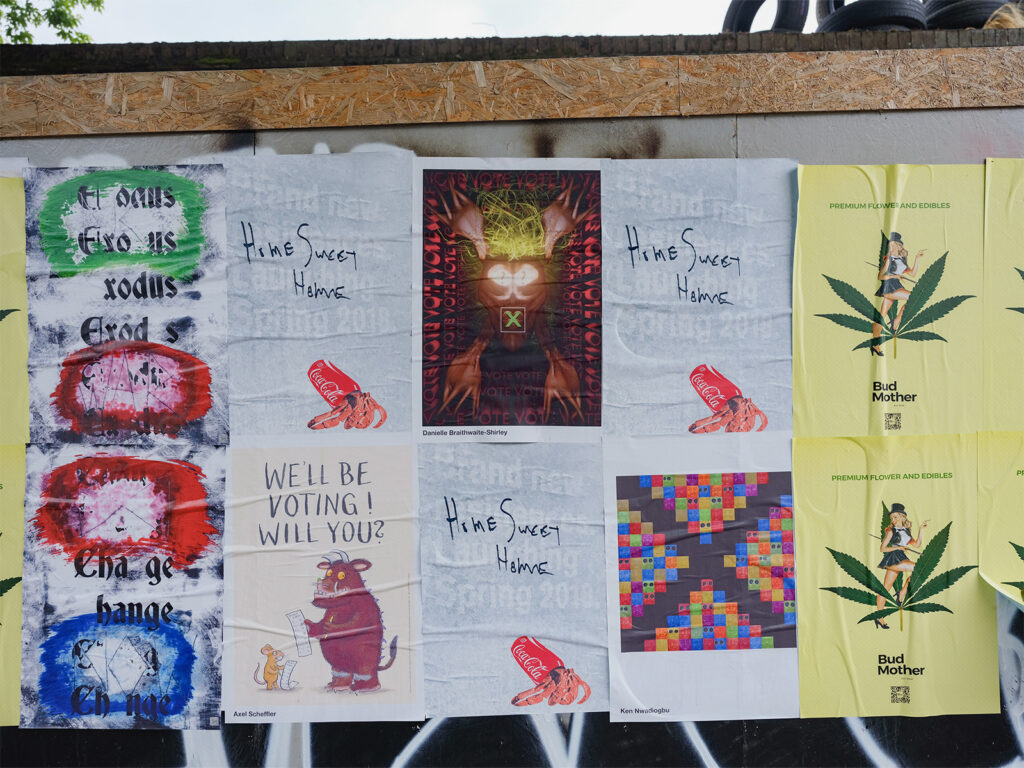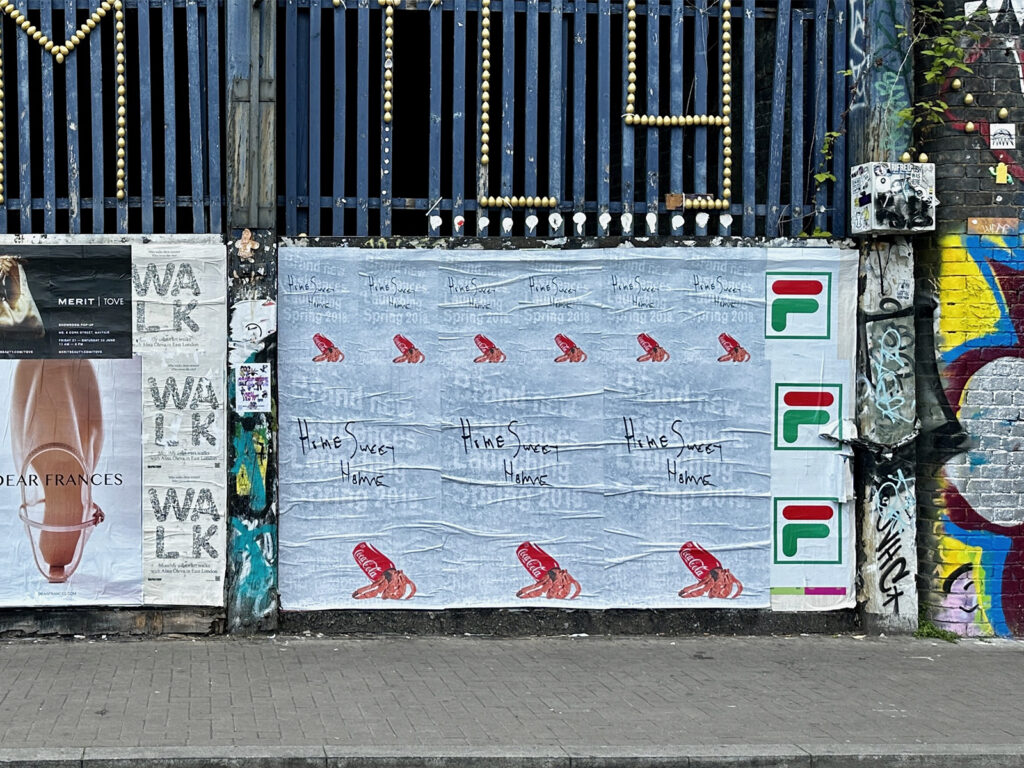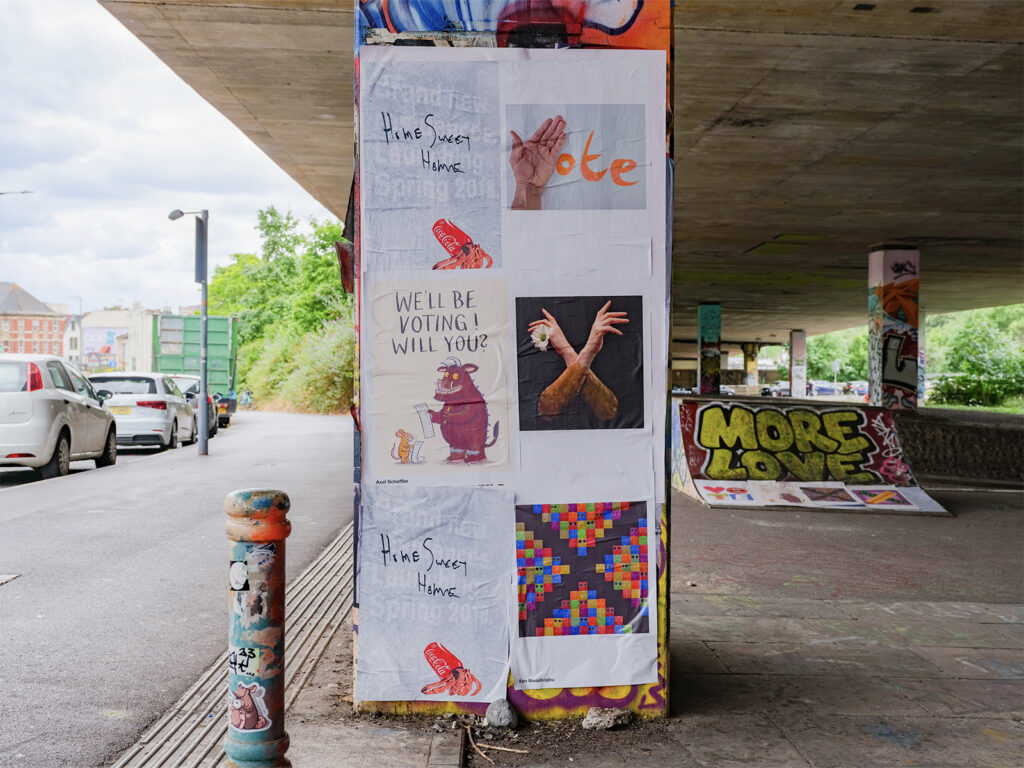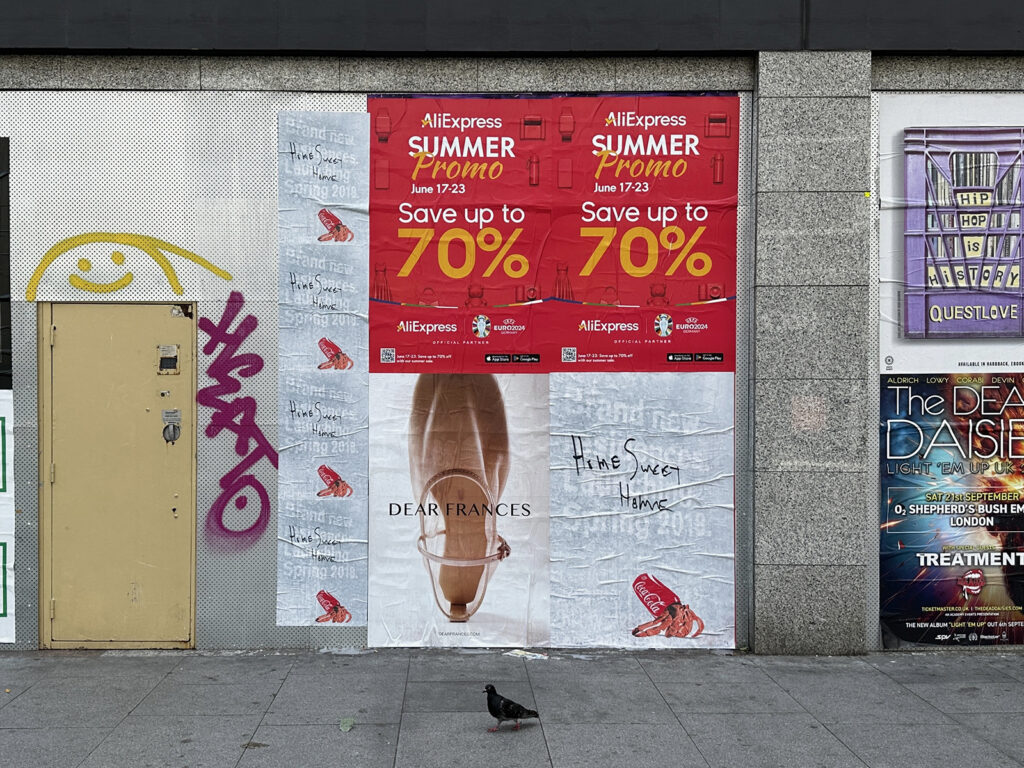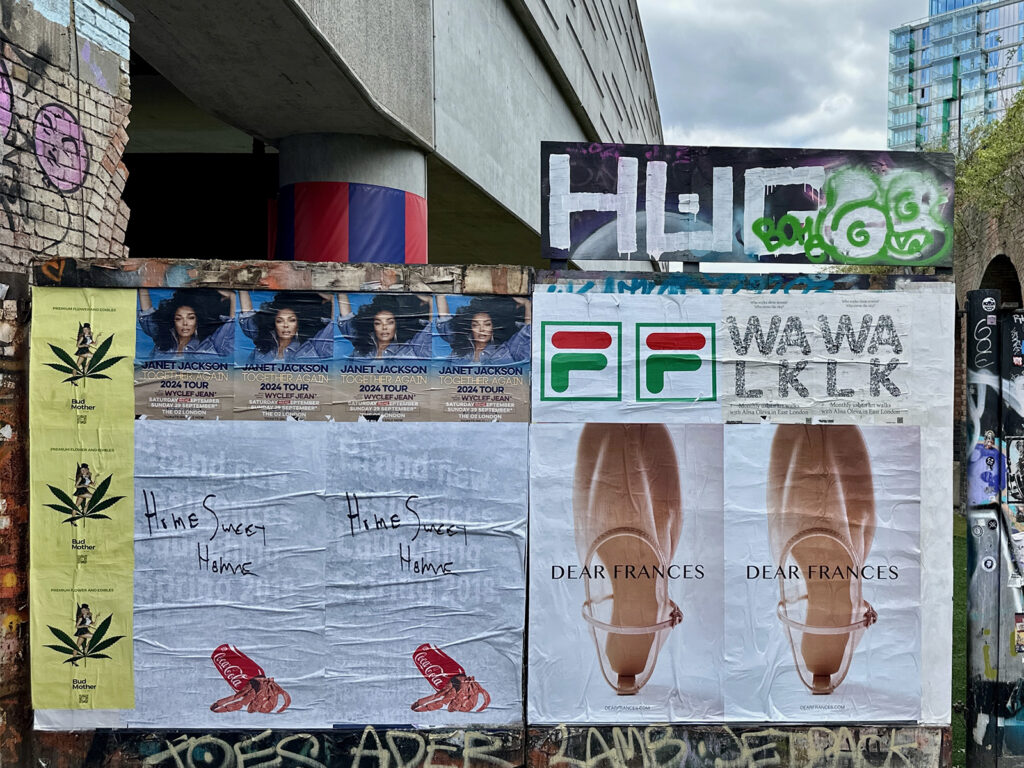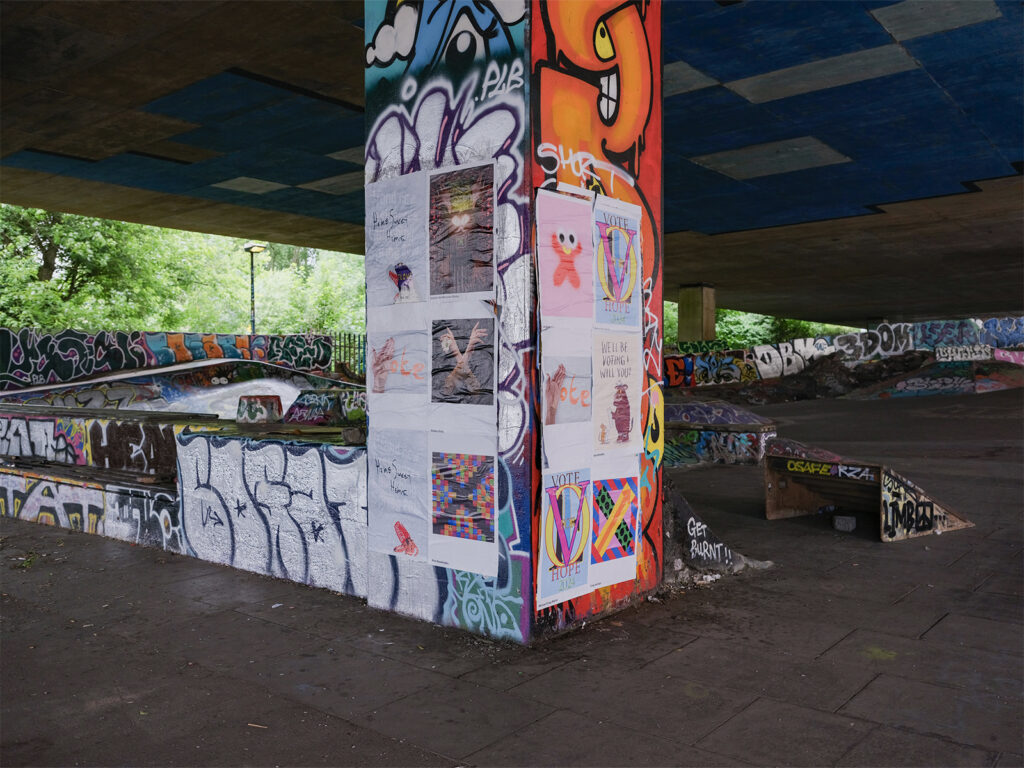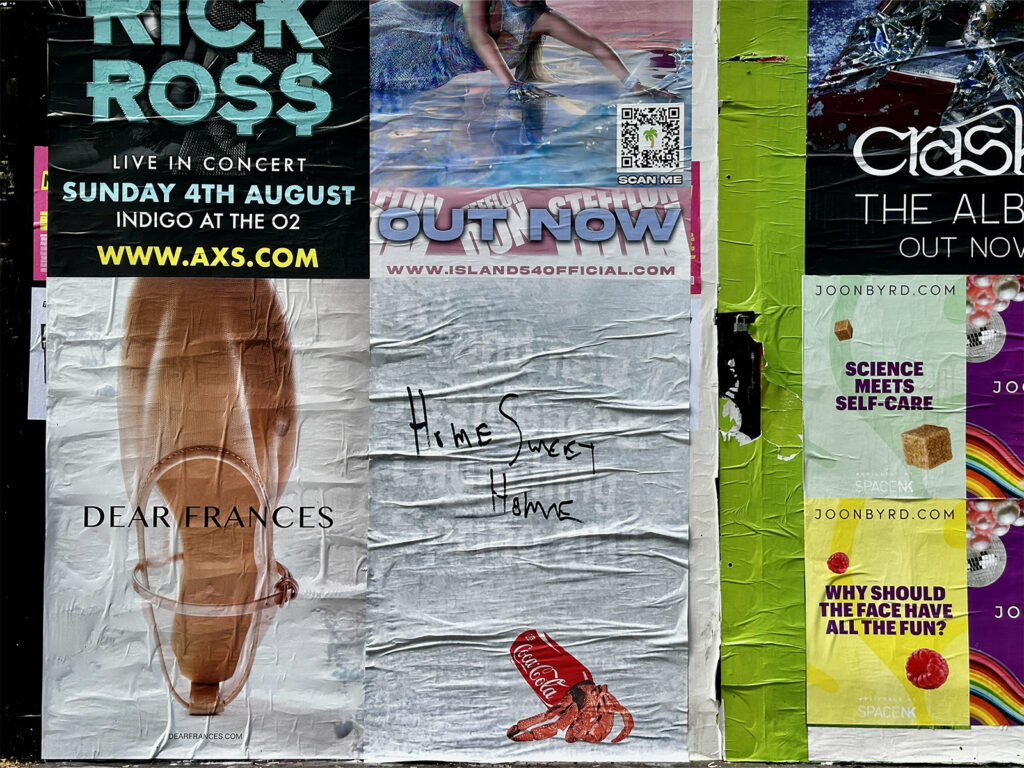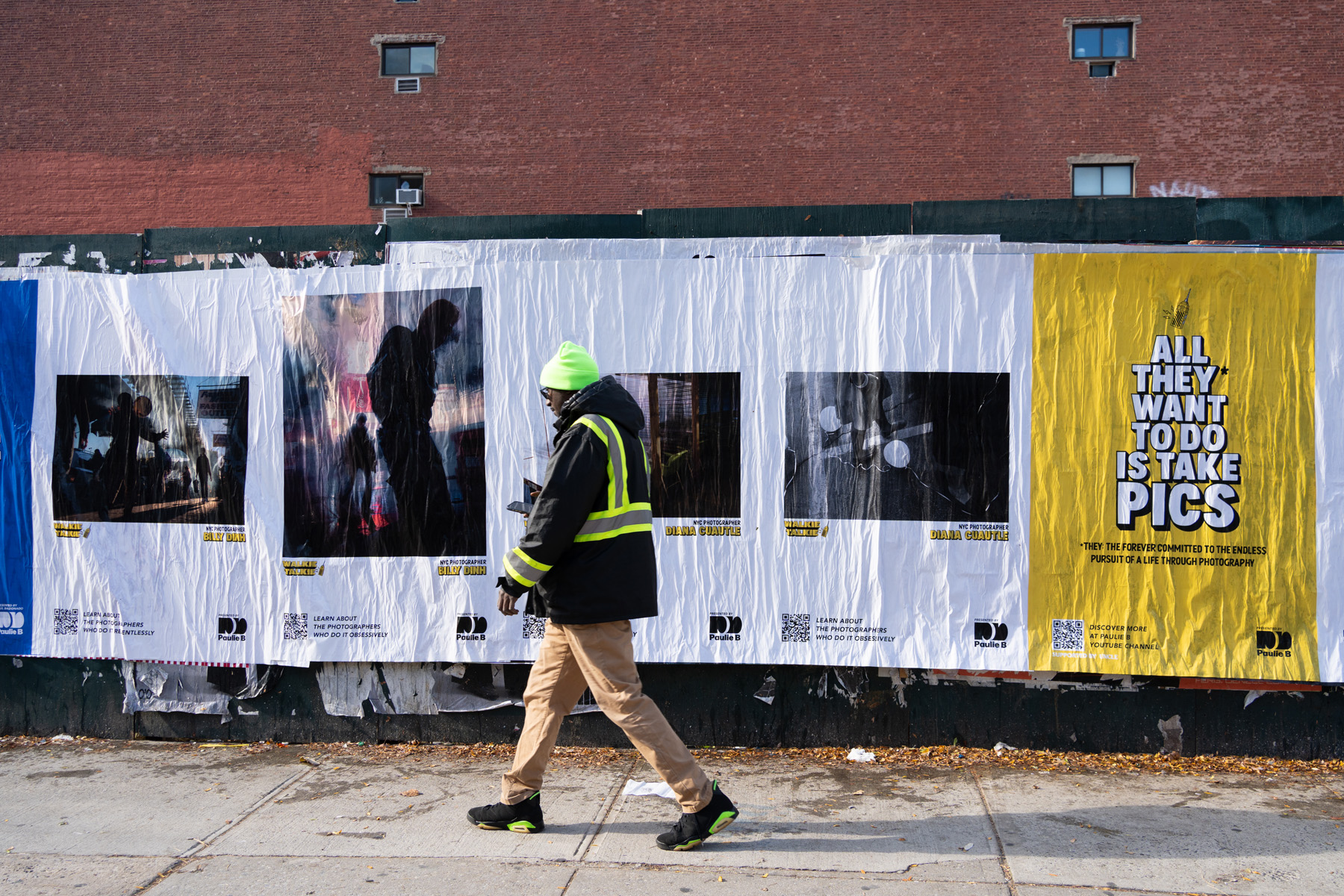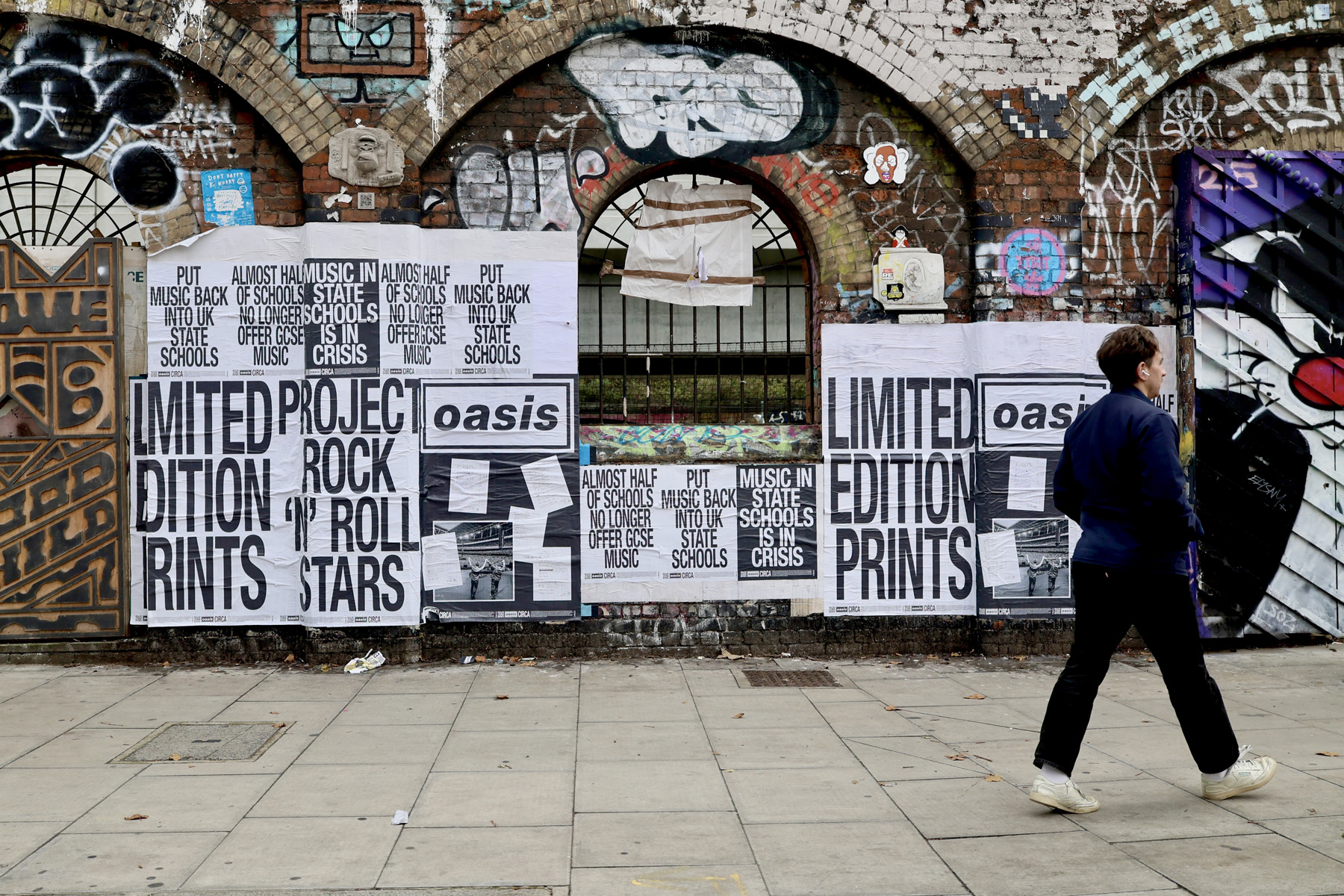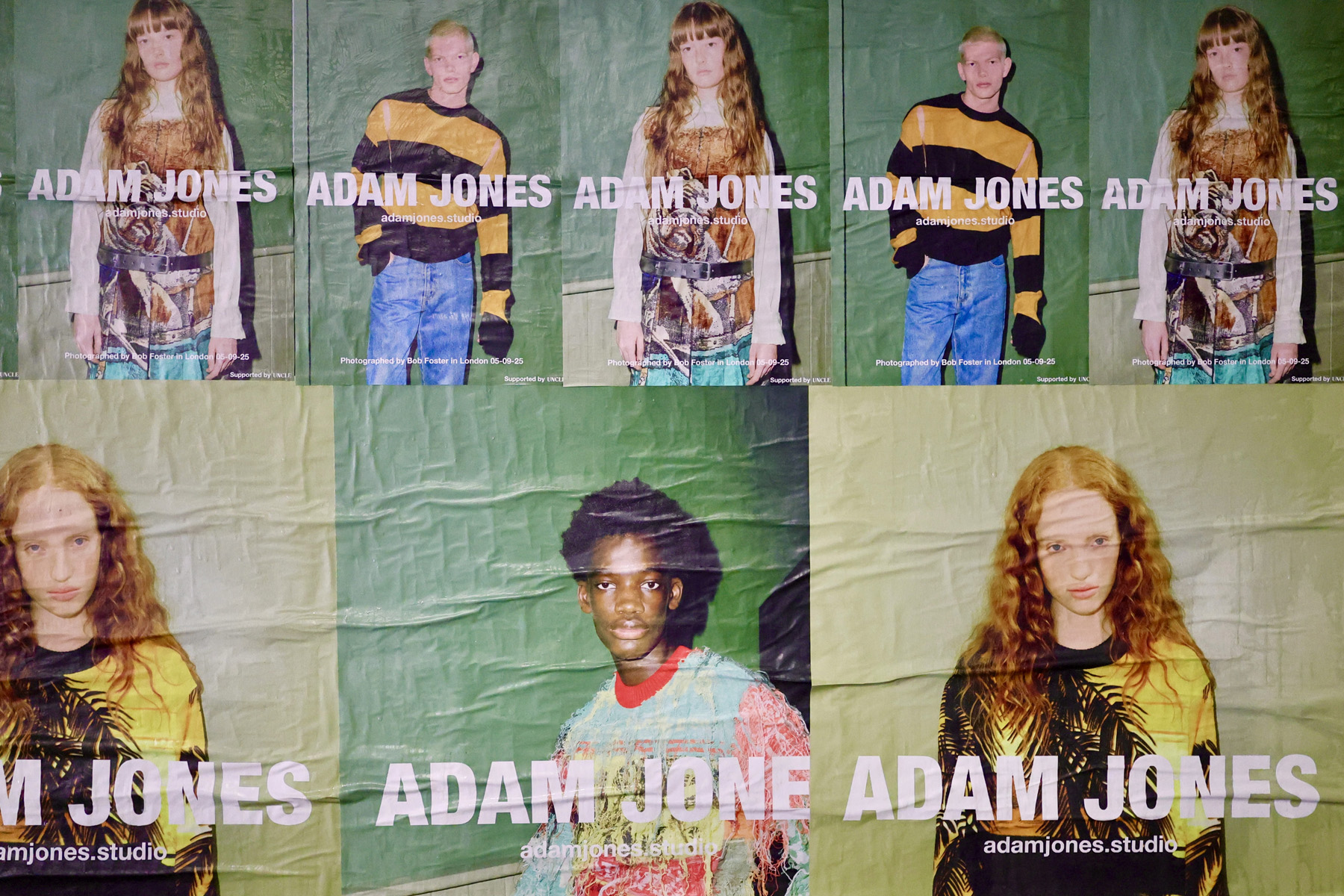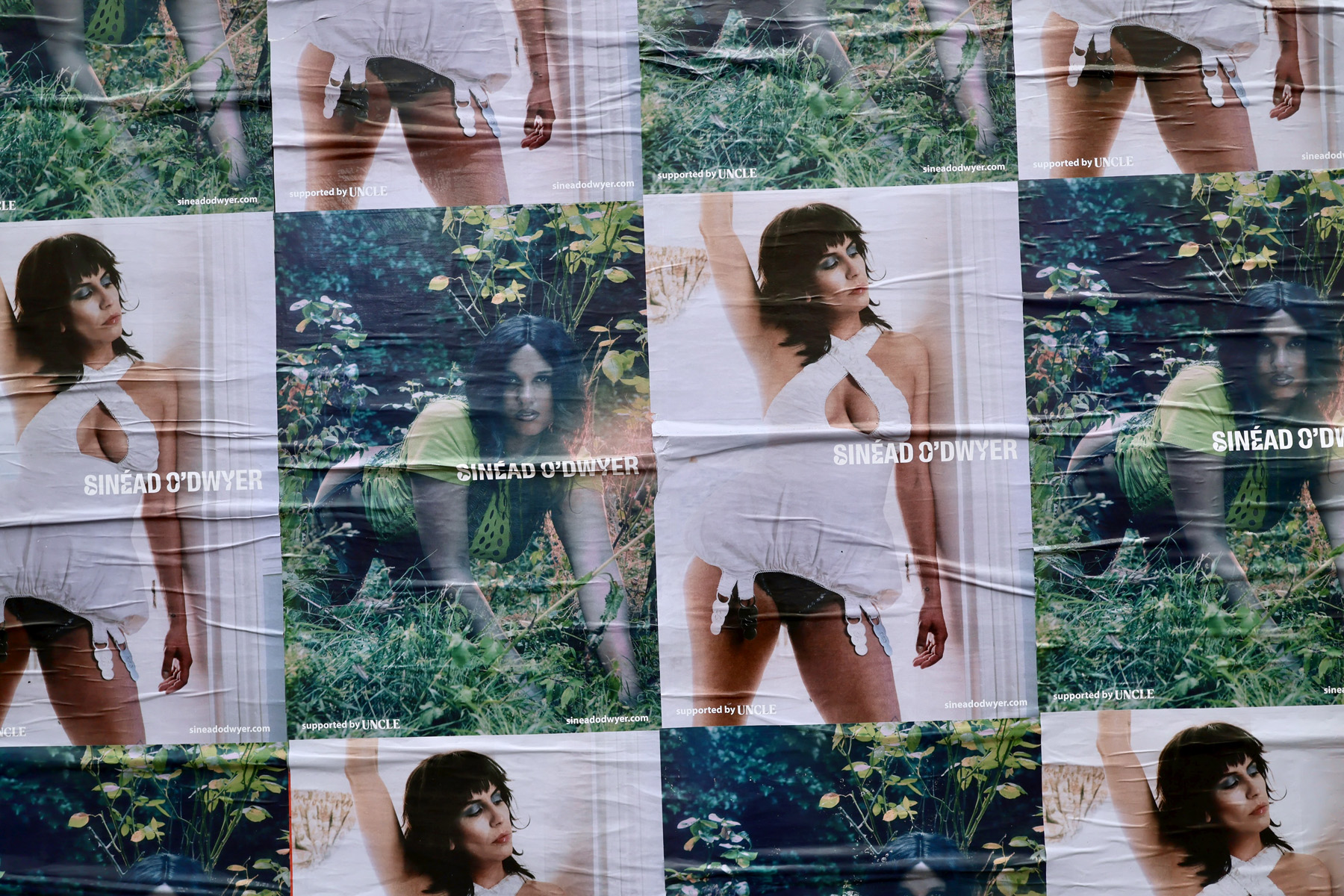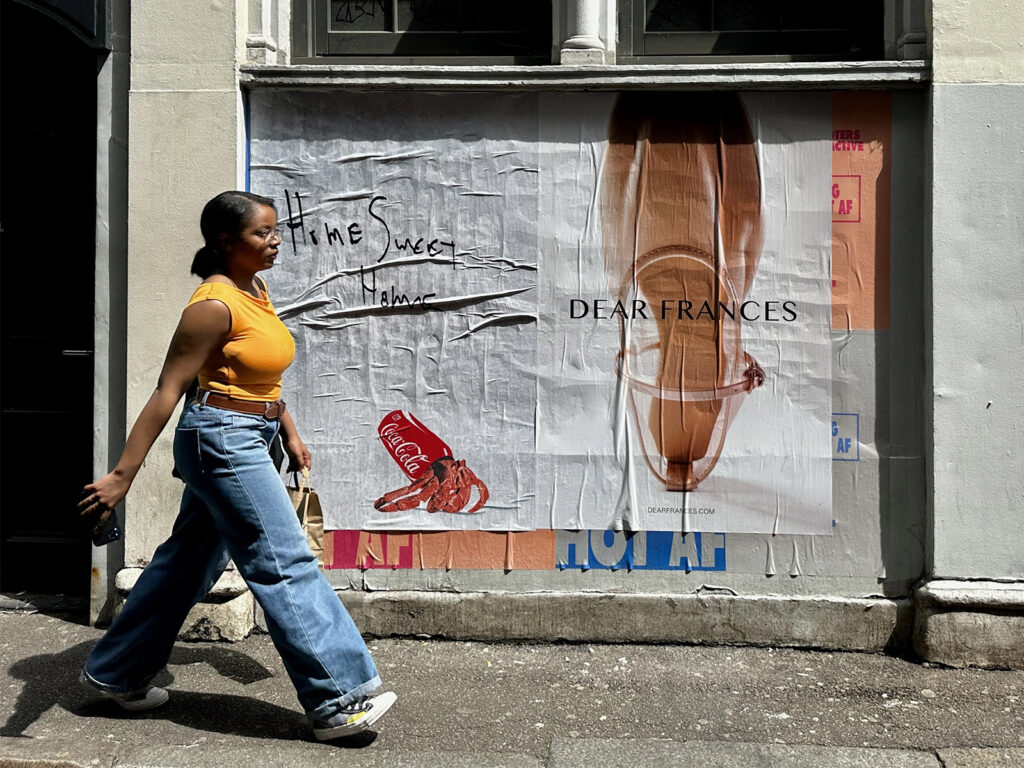
Hermit crabs are crustaceans that have evolved to occupy empty mollusc shells in a bid to protect their fragile exoskeletons. Only nowadays, when our oceans and hence beach habitats are heaving with societies’ discarded refuse, the crabs have been forced to make bottles, cans, plastic cups, and the like their mobile homes.
The sight of such vulnerable, other worldly creatures coupled with detritus born of our neglectful consumer society is more than unsettling, it feels palpably wrong. It’s damning evidence that commerce always seems to trump any sense of stewardship, of care for planet earth.
Observing this sorry situation, artist and curator Olly Walker has pursued an ongoing sticker, paste-up and now, courtesy of UNCLE, a poster project featuring hermit crabs emerging from branded cans.
Placing these misfit chimeras on sites of urban development, they become a pointer to and metaphor for gentrification and displacement. A nauseating sign of global corporations and financial imperatives relentlessly impacting not just the natural world but all our lives.
“It’s originally based on my experience of living in Hackney and seeing how residents have been systematically driven out of their homes and neighbourhoods by property developers whose only real focus is on profit at the expense of the local people and infrastructure that once sustained thriving communities,” the artist opined. “And this is happening to poorer, marginalised people in major cities across the world. The hermit crab artwork is a visual objection to the blinkered attitude of these developers and planning regimes. It’s a protest against wanton destruction, not just of tangible amenities like bingo halls, pubs and community centres but also peoples’ historical, social bonds to the places where they live and work, neighbourhoods they’ve grown up in.”
We caught up with Olly to chat about his HOME SWEET HOME project but also his long involvement in many creative projects.
HOME SWEET HOME IS AN ONGOING PROJECT WITH POTENTIALLY MANY ITERATIONS. CAN YOU TALK ABOUT THE VERSION THAT SEES THE CRAB CAUGHT IN A MONTANA GOLD AEROSOL SPRAY CAN?
In the 1990s and the noughties London’s East End was a magnet for street artists from all over the world. In a time before social media, it was word-of-mouth that drew people to come and see new, exciting work.
THE AREA HAS CHANGED A LOT SINCE THOSE DAYS…
Yes, new buildings have sprung up everywhere and walls which were once available to paint on have either disappeared due to development or have been taken over by street art agents.
SO, WHAT WAS ONCE AN INDEPENDENT PAINTED STREET ART, PASTE-UP AND GRAFFITI SCENE HAS BEEN REPLACED WITH WALL MURALS THAT MAY BE TECHNICALLY CLEVER BUT BASICALLY, THEY’RE JUST ADVERTS?
And my Montana Gold crabs ‘intervene’ on these mural adverts. Again, it’s a comment on gentrification but also, it’s a reminder that corporate displacement is not just about the loss of housing, it’s about the materialistic co-option of our urban environments and the effects that can have on social and mental well-being.
YOU’RE AN ARTIST AND CURATOR, WE’VE ESTABLISHED THAT, BUT YOU’RE ALSO A STREET ART AFICIONADO, A DESIGNER AND PRODUCER (WHO HAS WORKED ACROSS BOOK, FILM AND FASHION WORLDS). COULD YOU TELL US ABOUT A FEW OF THE ‘HIGHLIGHTS’ (AND EVEN PERHAPS SOME ‘LOWS’) OF YOUR LONG AND RICHLY VARIED CAREER WORKING IN THE ARTS?
Yeah, some of those [early] experiences were great. I was designing books for Steve Lazarides [publisher, photographer, collector and curator who was instrumental in popularising street art] and that included meeting the artists. So, I got to meet JR, Vhils, Paul Insect I already knew, Ben [Turnbull], that’s how we met, and erm, Johnny Yeo who’s just painted the king! When you get to meet these artists and you witness their work ethic, that was what spurred me on to go down the street art route really and slowly move away from some of the corporate work that I was doing.
I was lucky to have those experiences, without meeting those artists you’d never get to see the other side of how all that works and how amazingly inspiring they are.
IS THAT THE ORIGIN AS WELL OF HOW YOUR STENCIL AND STREET ART POSTER BOOKS CAME ABOUT?
Yeah, that happened through a contact at Laurence King [world leading publisher of art books] who’d sort of seen what I’d been doing and we just came up with the idea of doing the stencil books. And once again that involved working, albeit remotely, with forty of the best artists in the world. Those experiences drive you on to be even better, more creative and produce more work. They also led to my curating, at the Saatchi Gallery, and Urban Nation [a museum dedicated to street art, graffiti and contemporary urban art] in Berlin so once again you’re in the company of some of the best artists in that field. You then take what you’ve learnt and apply it to your own work. And I think now I’ve reached a point where everything I do excites me. Because I don’t have a design studio to run anymore which means I don’t have to feed work into it that I don’t particularly want to do. I don’t have to pay wages, rents, all of that.
Currently I’m working with Katherine Hamnett on her huge campaign to get people out to vote, with JackArts, that’s an amazing opportunity. Likewise, I’m just getting this bespoke packaging together for a special record project with John Gosling to release Alexander McQueen’s fashion show soundtracks. Again, that’s exciting because they’re kind of unique projects. And so, I guess I’m lucky really to have these things sort of come at me. But, of course, you do have to do a bit of leg work. You have to put yourself out and about a bit. I don’t ever have to pitch for anything and the design world is full these days of people desperately pitching for work and that can be a bit soul destroying.
AND YOU PRODUCED A FILM NOT SO LONG AGO WITH DR.D?
The film side of it is brilliant. And that was another project where there was a whole crew of very talented filmmakers, you know, the DOPs [directors of photography], the director, the editor, they’re all highly rated in the industry and [during Covid] we were all out of work. So, I came up with the idea of working with Dr.D and it turned into an amazing project.
I think, strangely, one of the nice things about it is there was no money involved. Which meant there wasn’t any influence from a ‘client’ as such. No money equals freedom sometimes. And again, John Gosling did the soundscape for the Dr.D film. Suse helped too [Susan Hansen is Europe’s most cited street art scholar]. It was a coming together of very talented and enthusiastic people. Initially the film crew had never met Dr.D, or seen what he does. And they were blown away by being involved in the project, again the artist’s energy, commitment, and the work that he sites in the streets, it changes the way you think about not just the street art and activism, it offers you another lens through which we can experience the city and the social issues that arise there.
ANY LOWS?
It’s not really a low as such but one thing that does piss me off is when people don’t proofread copy properly! Apart from that, it’s all good.

